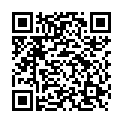|
|
|
| Module code: MEB_24_A_2.03.GBD |
|
|
3V+1U (4 hours per week) |
|
5 |
| Semester: 2 |
| Mandatory course: yes |
Language of instruction:
English |
Assessment:
written exam 180 min
[updated 13.11.2023]
|
MEB_24_A_2.03.GBD (P241-0423) Mechanical Engineering, Bachelor, SO 01.10.2024
, semester 2, mandatory course
|
60 class hours (= 45 clock hours) over a 15-week period.
The total student study time is 150 hours (equivalent to 5 ECTS credits).
There are therefore 105 hours available for class preparation and follow-up work and exam preparation.
|
Recommended prerequisites (modules):
None.
|
Recommended as prerequisite for:
|
Module coordinator:
Prof. Dr.-Ing. Ramona Hoffmann |
Lecturer:
Prof. Dr.-Ing. Ramona Hoffmann
[updated 28.02.2025]
|
Learning outcomes:
After successfully completing this module, students will be familair with the basic load cases. They will be able to recognize, analyze and calculate the behavior of components under the effect of basic loads. Students will be able to abstract real components on the mechanical models. They will be able to dimension simple components under simple loads. Students will be able to formulate questions and speak in front of a large group.
Students will improve their subject-related technical English skills. Students will know the subject-specific English terms.
[updated 28.02.2025]
|
Module content:
Introduction and classification: Tasks of component dimensioning and elastostatic principles Basic load cases Tension and compression: tension, elongation, material law, thermal expansion, variable stresses, structures of equal strength The bar as a model for real components Statically determinate bar systems, statically indeterminate bar systems Surface contact under compressive force: Bearing stress/surface pressure Thrust/transverse shear/shearing Bending: Straight beam, moments per unit area, bending line, beam of equal strength, inclined bending, transverse shear The beam as a model for real components Torsion: Round, full cross sections, hollow cross sections, arbitrary cross sections, behavior of open cross sections Bending of straight bars
[updated 15.01.2024]
|
Recommended or required reading:
Groß, Hauger, Schröder, Wall: Technische Mechanik 2 – Elastostatik, Springer-Verlag. Holzmann, Meyer, Schumpich: Technische Mechanik – Festigkeitslehre, Springer Vieweg Verlag. Läpple: Einführung in die Festigkeitslehre, Vieweg+Teubner Verlag. Böge: Technische Mechanik, Springer Vieweg Verlag. Hibbeler: Technische Mechanik 2 Festigkeitslehre, Pearson Verlag. Kabus: Mechanik und Festigkeitslehre, Hanser Verlag.
[updated 15.01.2024]
|

